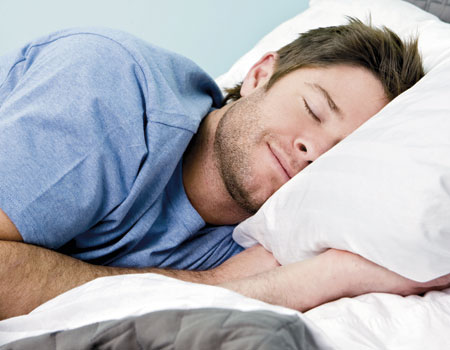Taking a phone to bed causes sleepless nights for over 12 million UK adults

Nearly one in four UK adults (23%) has experienced sleepless nights as a result of being glued to their phone in bed, new research by leading smartphone maker OnePlus has found.
According to wider studies, the main suspect is blue light emitted from the displays of digital devices. Blue light mimics daylight preventing the body from producing melatonin1 naturally – the hormone that makes you sleepy.
Astonishingly, 86% of millennials report sleeplessness from staying up too late on their phones – by far the largest affected age group. Nearly one in six (15%) of this 18-34 age group are on their phones between 11pm and 3am.
In contrast, the older you are the less likely you are to be affected by phone-induced insomnia: a quarter of 35-44-year-olds experience problems followed by 17% of 45-54-year-olds and 9% of over-55s.
The research also found:
- The bedroom (38%) is second only to the living room (47%) as the most common place for adults to be using their phones
- A quarter of the population regularly uses a special screen mode to restrict blue light. But 29% of adults have never done so
- Londoners (51%) are the most likely to be on their phones in bed, followed by the Welsh (43%) and those in the North East (42%)
Lisa Artis, head of The Sleep Council said: “While these results are not surprising, it is eye-opening to read that taking a phone to bed is causing sleepless nights for so many.
“We know that blue light inhibits sleep because the short wavelength stimulates sensors in the eyes to send signals to your brain’s internal clock, tricking it into thinking it’s daytime. Blue light is beneficial in daylight hours as it boosts mood, reaction times and concentration but in the evening, the recommendation is to avoid screen time for an hour before bedtime to help increase melatonin levels.
“For those who struggle to not use digital devices in the evening, it’s important to look for technology that is helping to restrict blue light and we would encourage the need for tech companies to more mindful of this issue and work to find a solution.
OnePlus commissioned this research following a pledge to tackle the blue light phenomenon. New models all feature innovative technology, such as the E3 display panel that dramatically cuts blue light by 42%. Dark Mode ensures low-light conditions are easier on the eyes and Zen Mode keeps a lid on distractions by disabling phone access for up to 60 minutes.
Kate Parkyn, Head of EU Strategy & UK Marketing at OnePlus, comments: “Technology should be there to improve life, not get in the way of it, or for that matter, a good night’s sleep.
Which is why OnePlus is dedicated to helping people focus on what matters to them. It’s led us to continue to invest in industry leading screen technology, which has allowed us to bring a 90 Hz display with key features like the E3 panel, Dark Mode and Zen Mode, keeping distractions at bay by disabling access for up to 60 minutes”.




